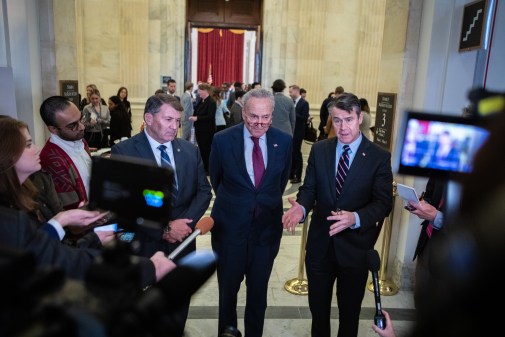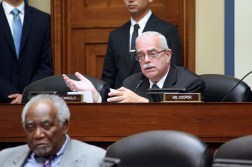President Trump signs executive order on national AI strategy

President Donald Trump signed an executive order Monday revealing his administration’s cohesive plan for American leadership in the development of artificial intelligence.
The “American AI Initiative” lays out a “multi-pronged approach” to the challenge, focused around five pillars. First, the order directs federal agencies to prioritize AI when crafting research and development budgets. It also prompts agencies to make data and computing resources available to AI researchers outside the government, asks them to set up fellowship programs and trainings to help workers gain AI-relevant tech skills, and commits to international collaboration on AI with America’s allies.
Finally, the order calls for the development of an AI governance framework. “As AI moves from the research laboratory to commercialization, regulatory guidance must also be updated to promote innovation, while also building public trust in AI,” a senior administration official said in a press call. The White House Office of Science and Technology Policy, the Domestic Policy Council and the National Economic Council, together with regulatory agencies, are tasked with creating this guidance.
“In last week’s State of the Union address, President Trump committed to investing in cutting-edge Industries of the Future,” OSTP Deputy CTO Michael Kratsios said in a statement. “The American AI Initiative follows up on that promise with decisive action to ensure AI is developed and applied for the benefit of the American people. With a strong focus on prioritizing R&D investment, removing barriers to innovation, and preparing America’s workforce for jobs of today and tomorrow, the Initiative helps strengthen American leadership while remaining true to our Nation’s values and priorities.”
Various parts of the executive order aren’t totally new. President Trump already directed agencies to focus on AI R&D through his 2020 budget priorities memo. The interest in developing a governance strategy that doesn’t stifle innovation hearkens back to basically every speech Kratsios has given during his tenure. And there are also a bunch of different AI initiatives already taking place across the federal government, from the Department of Defense’s Joint AI Center to the Defense Advanced Research Project Agency’s $2 billion AI Next campaign and more.
But the document itself is new for the U.S., which has been lagging behind peer nations, allied and otherwise, in developing and publicizing a cohesive national AI strategy. In recent months various groups have argued that America needs such a document — most recently, in December 2018, the Center for Data Innovation released a report on the matter.
“Absent an AI strategy tailored to the United States’ political economy, U.S. firms developing AI will lose their advantage in global markets and U.S. organizations will adopt AI at a less-than-optimal pace,” the center argued at the time.




